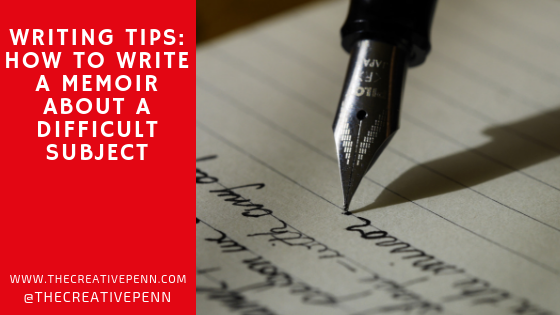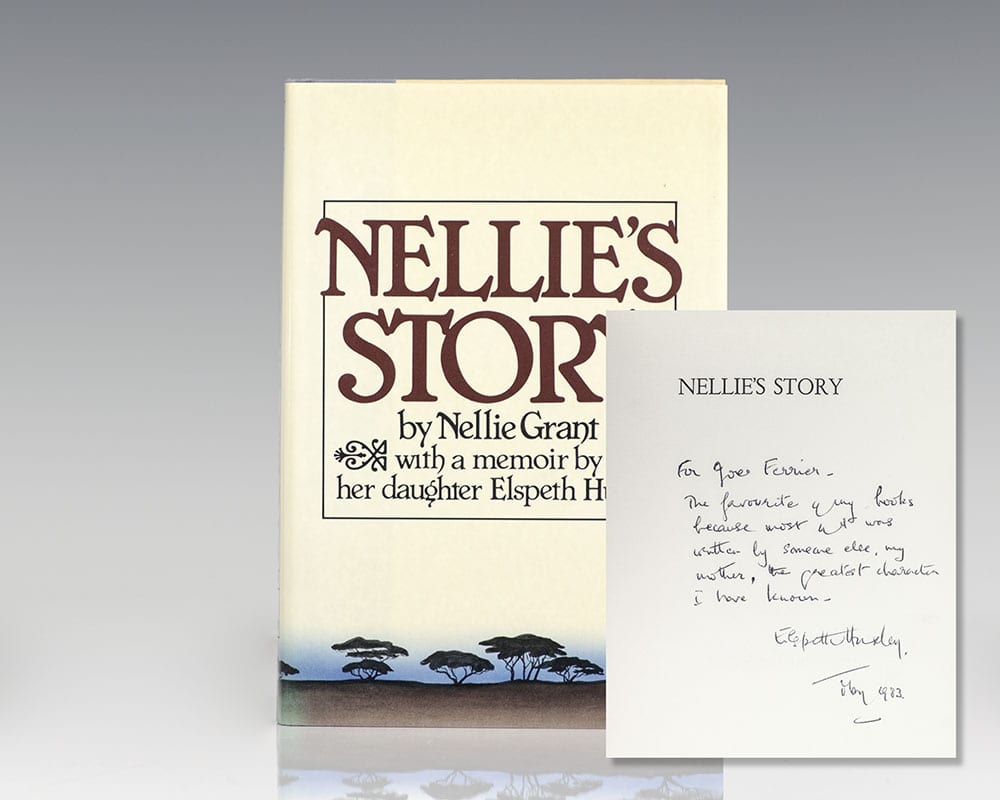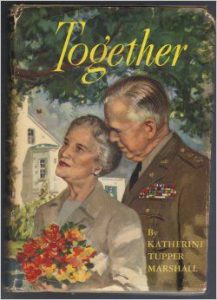Memoir nonfiction autobiography life memories poetry love family truestory shortstory travel biography depression diary story true childhood memory personal journal 1.2K Stories Sort by: Hot.
A memoir is like a diamond necklace: before you can set the stone and craft the chain, you have to extract the ore and refine it. As Barrett suggests, you should treat yourself as an interview subject and ask yourself questions that can trigger stories that may have. A memoir like Educated, by Tara Westover, develops a thesis (in this case, about education) through the personal story. The theme does not relate to every memory the author conveys, but it does guide the story as a whole and shape the social message that extends beyond the author’s individual experiences.

A memoir (/ˈmɛmwɑːr/;[1] from French: mémoire: memoria, meaning memory or reminiscence) is any nonfictionnarrative writing based in the author's personal memories.[2][3] The assertions made in the work are thus understood to be factual. While memoir has historically been defined as a subcategory of biography or autobiography since the late 20th century, the genre is differentiated in form, presenting a narrowed focus. A biography or autobiography tells the story 'of a life', while a memoir often tells the story of a particular event or time, such as touchstone moments and turning points from the author's life. The author of a memoir may be referred to as a memoirist or a memorialist.
Early memoirs[edit]
Memoirs have been written since the ancient times, as shown by Julius Caesar's Commentarii de Bello Gallico, also known as Commentaries on the Gallic Wars. In the work, Caesar describes the battles that took place during the nine years that he spent fighting local armies in the Gallic Wars. His second memoir, Commentarii de Bello Civili (or Commentaries on the Civil War) is an account of the events that took place between 49 and 48 BC in the civil war against Gnaeus Pompeius and the Senate. The noted Libanius, teacher of rhetoric who lived between an estimated 314 and 394 AD, framed his life memoir as one of his literary orations, which were written to be read aloud in the privacy of his study. This kind of memoir refers to the idea in ancient Greece and Rome, that memoirs were like 'memos', or pieces of unfinished and unpublished writing, which a writer might use as a memory aid to make a more finished document later on.
The Sarashina Nikki is an example of an early Japanese memoir, written in the Heian period. A genre of book writing, Nikki Bungaku, emerged during this time.
In the Middle Ages, Geoffrey of Villehardouin, Jean de Joinville, and Philippe de Commines wrote memoirs, while the genre was represented toward the end of the Renaissance, through the works of Blaise de Montluc and Margaret of Valois, that she was the first woman to write her Memoirs in modern-style.[4]
Until the Age of Enlightenment encompassing the 17th and 18th centuries, works of memoir were written by Anthony Ashley-Cooper, 1st Earl of Shaftesbury; François de La Rochefoucauld, Prince de Marcillac of France; and Louis de Rouvroy, duc de Saint-Simon, who wrote Memoirs at his family's home at the castle of La Ferté-Vidame. While Saint-Simon was considered a writer possessing a high level of skill for narrative and character development, it wasn't until well after his death that his work as a memoirist was recognized, resulting in literary fame.[5]
From the eighteenth century[edit]
Over the latter half of the 18th through the mid-20th century, memoirists generally included those who were noted within their chosen profession. These authors wrote as a way to record and publish their own account of their public exploits. Authors included politicians or people in court society and were later joined by military leaders and businessmen. An exception to these models is Henry David Thoreau's 1854 memoir Walden, which presents his experiences over the course of two years in a cabin he built near Walden Pond.
Twentieth-century war memoirs became a genre of their own, including, from the First World War, Ernst Jünger (Storm of Steel) and Frederic Manning's Her Privates We. Memoirs documenting incarceration by Nazi Germany during the war include Primo Levi's If This Is a Man, which covers his arrest as a member of the Italian Resistance Movement, followed by his life as a prisoner in Auschwitz; and Elie Wiesel's Night, which is based on his life prior to and during his time in the Auschwitz, Buna Werke, and Buchenwald concentration camps.
Memoirs today[edit]
In the early 1990s, memoirs written by ordinary people experienced a sudden upsurge, as an increasing number of people realized that their ancestors’ and their own stories were about to disappear, in part as a result of the opportunities and distractions of technological advances. At the same time, psychology and other research began to show that familiarity with genealogy helps people find their place in the world and that life review helps people come to terms with their own past.[7]
With the advent of inexpensive digital book production in the first decade of the 21st century,[8] the genre exploded. Memoirs written as a way to pass down a personal legacy, rather than as a literary work of art or historical document, are emerging as a personal and family responsibility.[9]
The Association of Personal Historians was a trade association for professionals who assisted individuals, families, and organizations in documenting their life stories.[10] It dissolved in 2017.
Collections[edit]
With the expressed interest of preserving history through the eyes of those who lived it, some organizations work with potential memoirists to bring their work to fruition. The Veterans History Project, for example, compiles the memoirs of those who have served in a branch of the United States Armed Forces – especially those who have seen active combat.[11]
Academia[edit]
The term 'memoir' has been used in an academic context to describe an essay on a learned subject. Examples include explanatory texts accompanying geologic maps.[12]
See also[edit]
| Look up memoir in Wiktionary, the free dictionary. |
References[edit]
- ^'memoir noun - Definition, pictures, pronunciation and usage notes'. www.oxfordlearnersdictionaries.com.
- ^'memoir'. Merriam-Webster.com. Merriam-Webster. July 5, 2015.
- ^'memoir'. Oxford Dictionaries. Oxford University Press. July 5, 2015.
- ^(in French) Viennot, Éliane, Marguerite de Valois et l'écriture de l'histoire, 1574-1614, Études Épistémè, 17, spring 2010.
- ^Saintsbury, George (1911). Saint-Simon, Louis de Rouvroy, Duc de, In Chisholm, Hugh. Encyclopædia Britannica, 24 (11th ed.). Cambridge University Press, pp. 47, 48.
- ^'Gedenkschriften over Napoleon's veldtochten, meegemaakt als soldaat bij het 2e regiment carabiniers te paard, 1805-1815'. lib.ugent.be. Retrieved 2020-08-28.
- ^Ledoux, Denis (2006). Turning Memories Into Memoirs: A Handbook for Writing LIfestories. Writer. ISBN978-0974277349.
- ^Henke, Harold (2001). Electronic Books and ePublishing: A Practical Guide for Authors. Springer Science & Business Media. ISBN978-1852334352. Retrieved 2014-12-12.
- ^Balzer, Paula (2011). Writing & Selling Your Memoir: How to Craft Your Life Story So That Somebody Else Will Actually Want to Read It. Writer. ISBN978-1599631356. Retrieved 2019-08-28.
- ^Wright, Chris (2002-01-17). 'Ordinary people'. The Phoenix. Phoenix Media/Communications Group.
- ^'Veterans History Project (Library of Congress)'. loc.gov.
- ^https://www.worldcat.org/title/amani-memoirs-a-provisional-soil-map-of-east-africa-kenya-uganda-tanganyika-and-zanzibar-with-explanatory-memoir/oclc/6022506
| Wikimedia Commons has media related to Memoirs. |
Writing a memoir is a daunting endeavor for any author: how do you condense your entire life story into a mere couple hundred pages? Of course, you'll find plenty of online guides that will help you write a memoir by leading you through the steps. But other times that old adage “show, don’t tell” holds true, and it’s most helpful to look at other memoir examples to get started.
If that’s the case for you, we’ve got you covered with 21 memoir examples to give you an idea of the types of memoirs that have sold well. Ready to roll up your sleeves and dive in?
The autobiographical memoir
The autobiographical memoir — a retelling of one’s life, from beginning to present times — is probably the standard format that jumps to most people’s minds when they think of this genre.
At first glance, it might seem like a straightforward recount of your past. However, don’t be deceived! As you’ll be able to tell from the examples below, this type of memoir shines based on three things: the strength of the author’s story, the strength of the story’s structure, and the strength of the author’s voice.
Examples
I Know Why The Caged Bird Sings by Maya Angelou. The woman who Toni Morrison said “launched African American writing in the United States,” Angelou penned this searing memoir in 1969, which remains a timeless classic today.
Me Talk Pretty One Day by David Sedaris. Less of a singular memoir than a collection of humorous anecdotes framed around his life as a transplant to Paris, the star of this book is Sedaris’ dry voice and cutting humor.
A Two-Spirit Journey by Ma-Nee Chacaby. Chacaby’s remarkable life — from growing up abused in a remote Ojibwa community to overcoming alcoholism and coming out as a lesbian as an adult — is captured in this must-read autobiography.
The “experience” memoir
One of the most popular memoirs that you’ll find on bookshelves, this type focuses on a specific experience that the author has undergone. Typically, this experience involves a sort of struggle, such as a bitter divorce, illness, or perhaps a clash with addiction. Regardless of the situation, the writer overcomes it to share lessons learned from the ordeal.
In an 'experience' memoir, you can generally expect to learn about:
- How the author found themselves facing said experience;
- The obstacles they needed to overcome; and
- What they discovered during (and after) the experience.
Examples

When Breath Becomes Air by Paul Kalanithi. Faced with the prognosis of terminal cancer at the age of thirty-six, Paul Kalanithi wrote an unforgettable memoir that tackles an impossible question: what makes life worth living?
A Million Little Pieces by James Frey. An account of drug and alcohol abuse that one reviewer called “the War and Peace of addiction,” this book became the focus of an uproar when it was revealed that many of its incidents were fabricated. (In case you’re wondering, we do not recommend deceiving your readers.)
Girl, Interrupted by Susanna Kaysen. Adapted in 1999 into a critically acclaimed film starring Angelina Jolie, Girl, Interrupted enduringly recounts the author’s battle with mental illness and her ensuing 18-month stay in an American psychiatric hospital.
The “event” memoir
Similar to the “experience” memoir, the “event” memoir centers on a single significant event in the author’s life. However, while the former might cover a period of years or even decades, the “event” memoir zeroes in on a clearly defined period of time — for instance, a two-month walk in the woods, or a three-week mountain climb, as you’ll see below.
Examples
Walden by Henry David Thoreau. In July of 1845, Henry David Thoreau walked into the woods and didn’t come out for two years, two months, and two days. This is the seminal memoir that resulted.
Memoir Story Of My Life
Into Thin Air: A Personal Account of the Mount Everest Disaster by Jon Krakauer. The controversial account of the 1996 Everest disaster, as written by author-journalist Krakaeur, who was climbing the mountain on the same day that eight climbers were killed.
The Year of Magical Thinking by Joan Didion. Immortalized as one of the classic books about mourning, The Year of Magical Thinking recounts the grief Didion endured the year following the death of her husband.
The “themed” memoir
When you look back on your own timeline, is there a strong theme that defines your life or ties it all together? That’s the premise on which a “themed” memoir is based. In such a memoir, the author provides a retrospective of their past through the lens of one topic.
If you’re looking to write this type of memoir, it goes without saying that you’ll want to find a rock-solid theme to build your entire life story around. Consider asking yourself:
- What’s shaped your life thus far?
- What’s been a constant at every turning point?
- Has a single thing driven all of the decisions that you’ve made?
Examples
Fever Pitch by Nick Hornby. Throughout an up-and-down upbringing complete with a debilitating battle with depression, the single consistent thread in this author’s life remained football and Arsenal F.C.
Educated by Tara Westover. If there’s one lesson that we can learn from this remarkable memoir, it’s the importance of education. About a family of religious survivalists in rural Idaho, this memoir relates how the author overcame her upbringing and moved mountains in pursuit of learning.
Call the Midwife by Jennifer Worth. Now best known for its BBC adaptation, Worth’s account of her life as a midwife caught people’s imagination with its depiction of life in London’s East End in the 1950s.
The family memoir
In a family memoir, the author is a mirror that re-focuses the light on their family members — ranging from glimpses into the dysfunctional dynamics of a broken family to heartfelt family tributes.

Examples of this type of memoir
Brother, I’m Dying by Edwidge Danticat. A love letter to her family that crosses generations, continents, and cultures, Brother, I’m Dying primarily tells the intertwined stories of two men: Danticat’s father and her uncle.
Native Country of the Heart by Cherrie Moraga. The mother is a self-made woman who grew up picking cotton in California. The daughter, a passionate queer Latina feminist. Weaving the past with the present, this groundbreaking Latinx memoir about a mother-daughter relationship confronts the debilitating consequences of Alzheimer's disease.
The childhood memoir
A subset of the autobiographical memoir, the childhood memoir primarily focuses (spoiler alert!) on the author’s childhood years. Most childhood memoirs cover a range of 5 - 18 years of age, though this can differ depending on the story.
Examples of this type of memoir

Angela’s Ashes by Frank McCourt. The groundbreaking winner of the 1997 Pulitzer Prize for Biography or Autobiography, McCourt’s memoir covers the finer details of his childhood in impoverished Dublin.
Boy: Tales of Childhood by Roald Dahl. Evoking his schoolboy days in the 1920s and 30s, the stories in this book shed light on themes and motifs that would play heavily in Dahl’s most beloved works: a love for sweets, a mischievous streak, and a distrust of authority figures.
Memoir Storyboard Sample
The travel memoir
What happens when you put an author on a plane? Words fly!
Just kidding. While that’s perhaps not literally how the travel memoir subgenre was founded, being on the move certainly has something to do with it. Travel memoirs have been written for as long as people could traverse land — which is to say, a long time — but the modern travel narrative didn’t crystallize until the 1970s with the publication of Paul Theroux’s Great Railway Bazaar and Bruce Chatwin’s In Patagonia.
In a travel memoir, the author isn’t the star of the show: the place is. You can expect to find these elements in a travel memoir:
- A description of the place
- A discussion of the culture and people
- How the author experienced the place and dealt with setbacks during the journey
Examples of this type of memoir
Eat, Pray, Love by Elizabeth Gilbert. Proof that memoirs don’t have to tell catastrophic stories to succeed, this book chronicles Gilbert’s post-divorce travels, inspiring a generation of self-care enthusiasts, and was adapted into a film starring Julia Roberts.
The Great Railway Bazaar by Paul Theroux. A four-month journey from London to East Asia (and back again) by train, this is the book that helped found the modern travel narrative.
The celebrity memoir
The celebrity memoir is just that: a memoir published by a celebrity. Though many celebrity memoirs are admittedly ghostwritten, the best ones give us an honest and authentic look at the “real person” behind the public figure.
Note that we define “celebrity” broadly here as anyone who is (or has been) in the public spotlight. This includes:
Memoir Story Starters
- Political figures
- Sports stars
- Comedians
- Actors and actresses
- Musicians
Examples of this type of memoir
Paper Lion by George Plimpton. In 1960, the author George Plimpton joined up with the Detroit Lions to see if an ordinary man could play pro football. The answer was no, but his experience in training camp allowed him to tell the first-hand story of a team from inside the locker room.
Memoir Story Arc
Troublemaker by Leah Remini. The former star of TV’s The King of Queens tackles the Church of Scientology head-on, detailing her life in (and her decision to leave) the controversial religion.

It’s Not About the Bike by Lance Armstrong. This is a great lesson on the way authors often write books to create their own legacy in the way they see fit. As history confirmed, Armstrong’s comeback success wasn’t entirely about the bike at all.
Now that you know what a memoir looks like, it’s time to get out your pen and paper, and write your own memoir! And if you want even more memoir examples to keep being inspired? We’ve got you covered: here are the 30 best memoirs of the last century.
